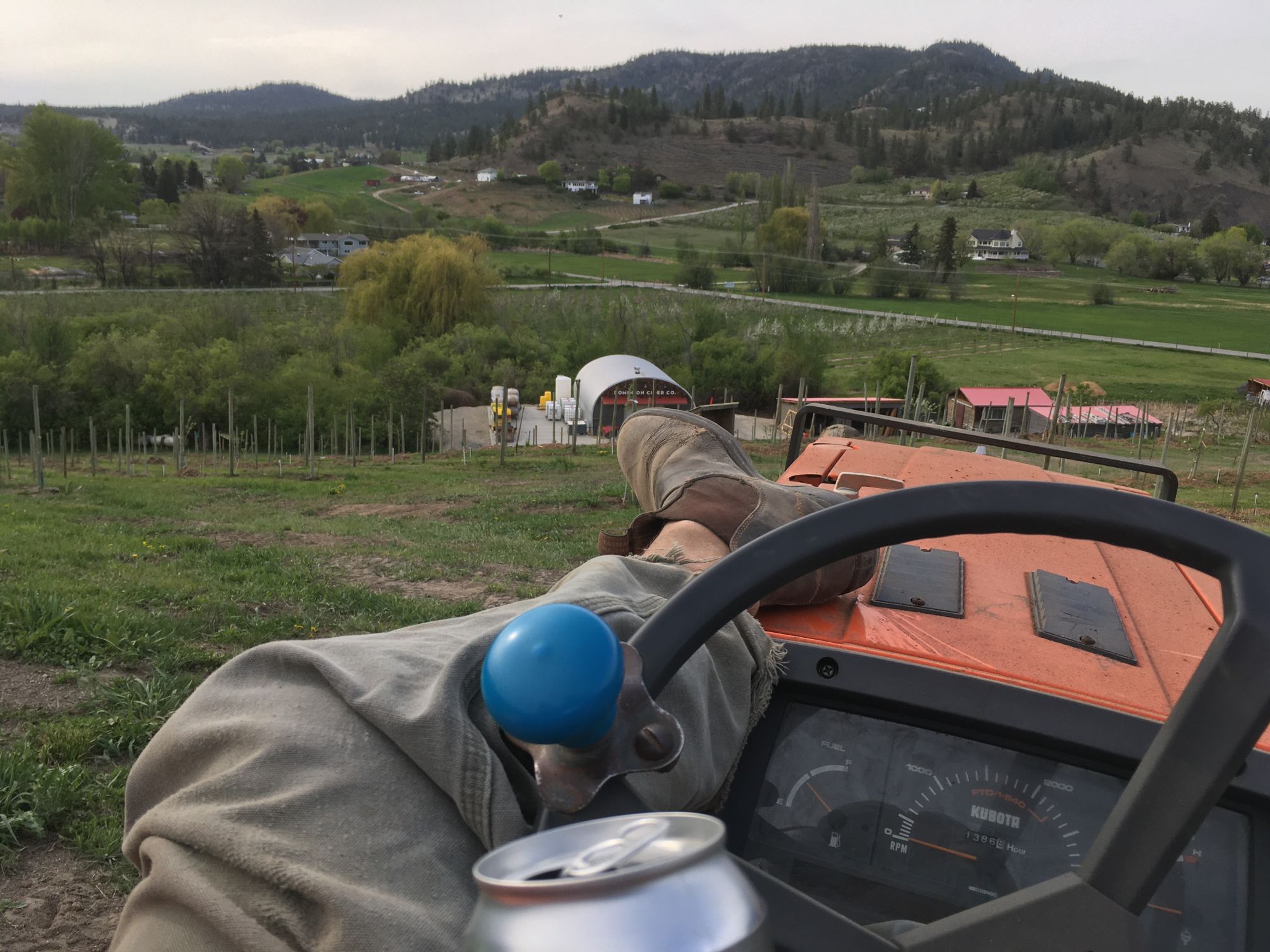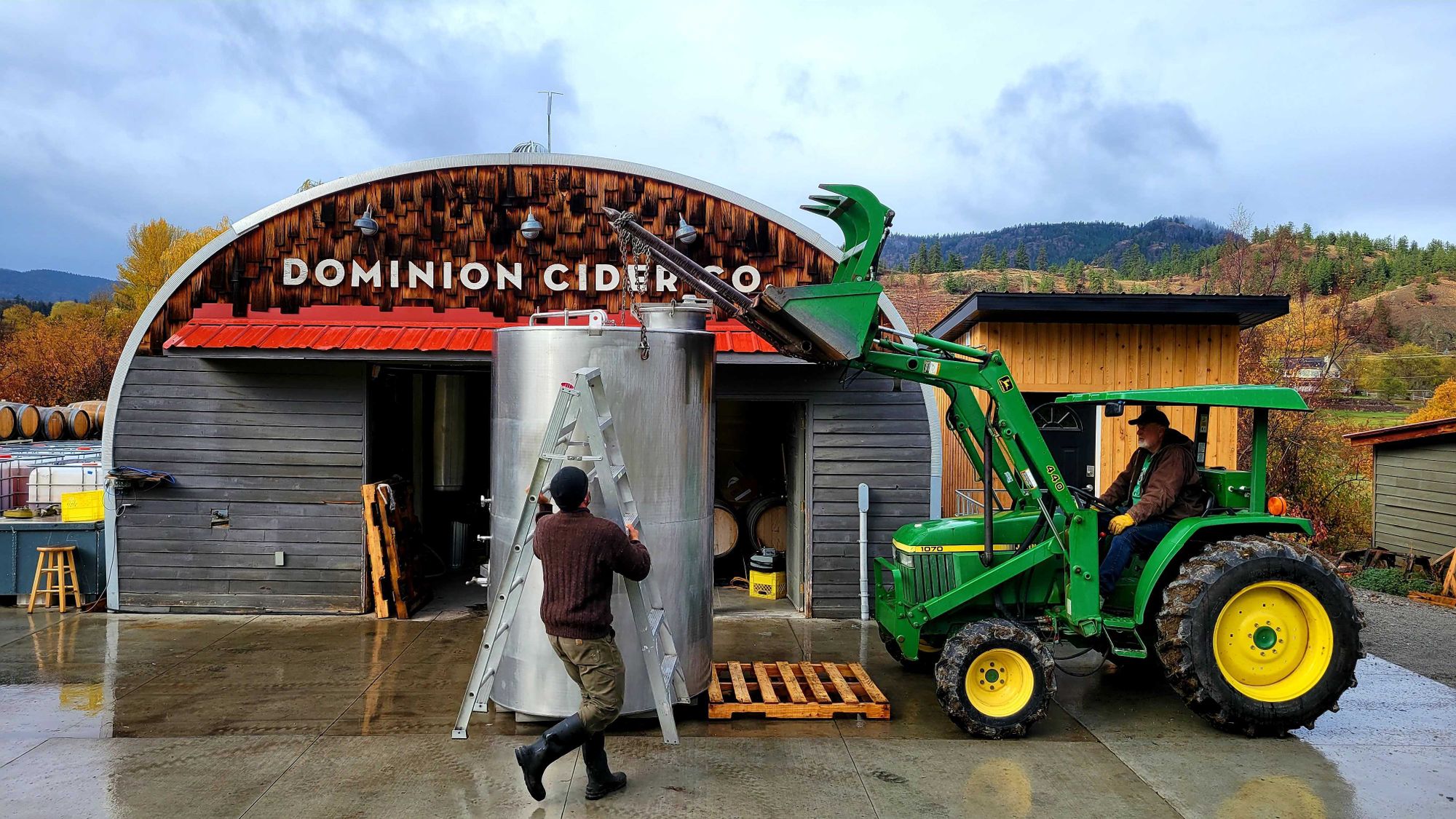Winter calm

Late fall is a quieter time in the cidery. The leaves are off the trees, it's frosty in the morning and dark earlier. It’s all in stark contrast to the mad rush of the previous months picking apples, pressing juice, and fermenting the cider. In December there is a small lull while we wait for billions of native yeast cells to do their work. It's time to take a breath. Wild ferments take much longer, usually a month or more. Long, slow, cool ferments – just like sourdough bread – are one of ways of developing complex and interesting flavours. The downside (or maybe the upside?) is the process takes time. When complete we’ll rack the cider into barrels or tanks for further aging before the cycle begins again and we start bottling once the snow melts.
We bought a couple of stainless tanks this fall. There is a manufacturer in town who makes beautiful, shiny, expensive new tanks. We didn't get one of those. They also have a graveyard of odd-ball used tanks in the weeds behind their shop. Luke and I found a couple that could work for us and we had them cleaned up and modified a bit for cider making. Getting them in the cidery, though, posed a challenge. The tanks are 12ft high but we only have a 7ft overhead door. Luckily my neighbour Harvey from across the road was on hand to help. He moved from Saskatchewan years ago and brought the giant tractor he used to farm 800 acres with. Over the years before we had a forklift that tractor has helped us unload pallets of bottles, lifted 2,000Lb totes of juice off my trailer, and even pulled out a 5 tonne delivery truck that had gotten stuck in the snow in the driveway one winter. More than a man with equipment he's a guy who has a lifetime of farmer experience finding a way to get things done. It’s something I aspire to. Thanks Harv.

Project misfires:
If you read the October newsletter you’ll remember that we attempted a carbonic maceration of some crabapples, a technique pinched from the winemaking world to lower acidity by fermenting the apples whole, before juicing them. Well a few weeks ago I took the lid off the fermentation tub but rather than biting into a fermented apple it was like taking a swig of cider vinegar. Not only that but the shrunken, discoloured vinegar apples were covered white fruit fly larva. I took a picture but thought better of sharing it here. Not a smash success. The whole tub was dumped on the compost pile which will feed the orchard next year, so not a total waste either. I've got some more ideas and we’ll give it another go next season.
This year was our first under organic management practices, a topic I plan to write more on next month. One of the biggest challenges is under-tree weed control. Among other techniques I tried this year was using squash planted in the tree row. The idea is that because squash grow so fast, their broad leaves spread out and can cut off the light to other weeds. Plus, you get a harvest of squash! In June Alyssa and I planted about 100 butternut seedlings I had sprouted on my windowsill. Out of 100 I had 1 survive. That's it. I think a few things were the cause. Squash are notorious for not transplanting well. I also planted them a bit too deep, and the wood chips around them (another weed control technique) might have stolen some nitrogen as they broke down. In any case, it was a bust. However, that one plant that did survive did great and produced about 10 tasty winter squash.
